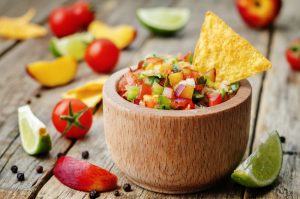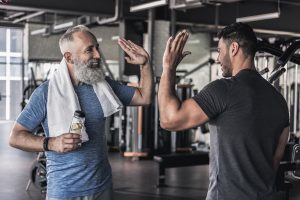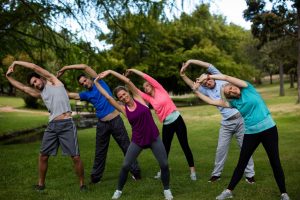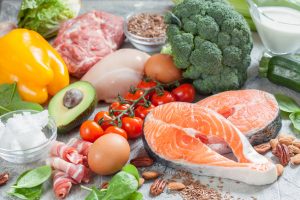Time to break out that slow cooker and make this hearty chili the whole family will enjoy! Loaded with beans, chicken and vegetables, it’s easy to prep in the morning and let it simmer all day while you work from home.
Ingredients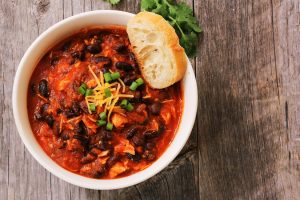
- 1 medium onion, chopped
- 2 cups chopped carrots
- 3 cloves garlic, minced
- 1 pound boneless, skinless chicken breasts, cut into bite-size pieces
- 1 cup dried brown lentils, rinsed
- 1 cup dried black beans, rinsed
- 4 cups no-salt-added, chicken broth
- 1 8-ounce can no-salt-added tomato sauce
- 3 tablespoons chili powder
- 1 tablespoon plus 1 1/2 teaspoons ground cumin
- 1/2 teaspoon salt
- 1/2 cup reduced-fat sour cream
- 1/2 cup (2 oz) shredded cheddar cheese
- 1 tablespoon fresh cilantro leaves
Directions
- Coat slow cooker with cooking spray. Place onion, carrots and garlic in bottom. Top with chicken, lentils and black beans. Stir in broth, tomato sauce, chili powder, cumin and salt.
- Cook on low for 8 hours. Stir before serving. Top each serving with 1 tablespoon sour cream and 1 tablespoon cheese. Garnish evenly with cilantro.
Nutrition Information
Serves: 8
Serving Size: 1 1/2 cups
Per serving: Calories: 282
Total Fat: 6g; Cholesterol: 38mg; Sodium: 448mg; Carbohydrate: 39g; Dietary Fiber: 18g; Sugar: 6g; Protein: 28g

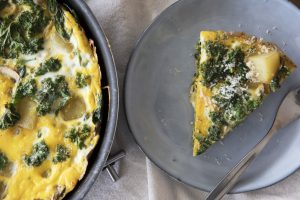
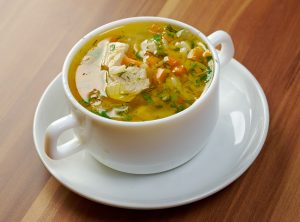 2 Tablespoons olive oil
2 Tablespoons olive oil